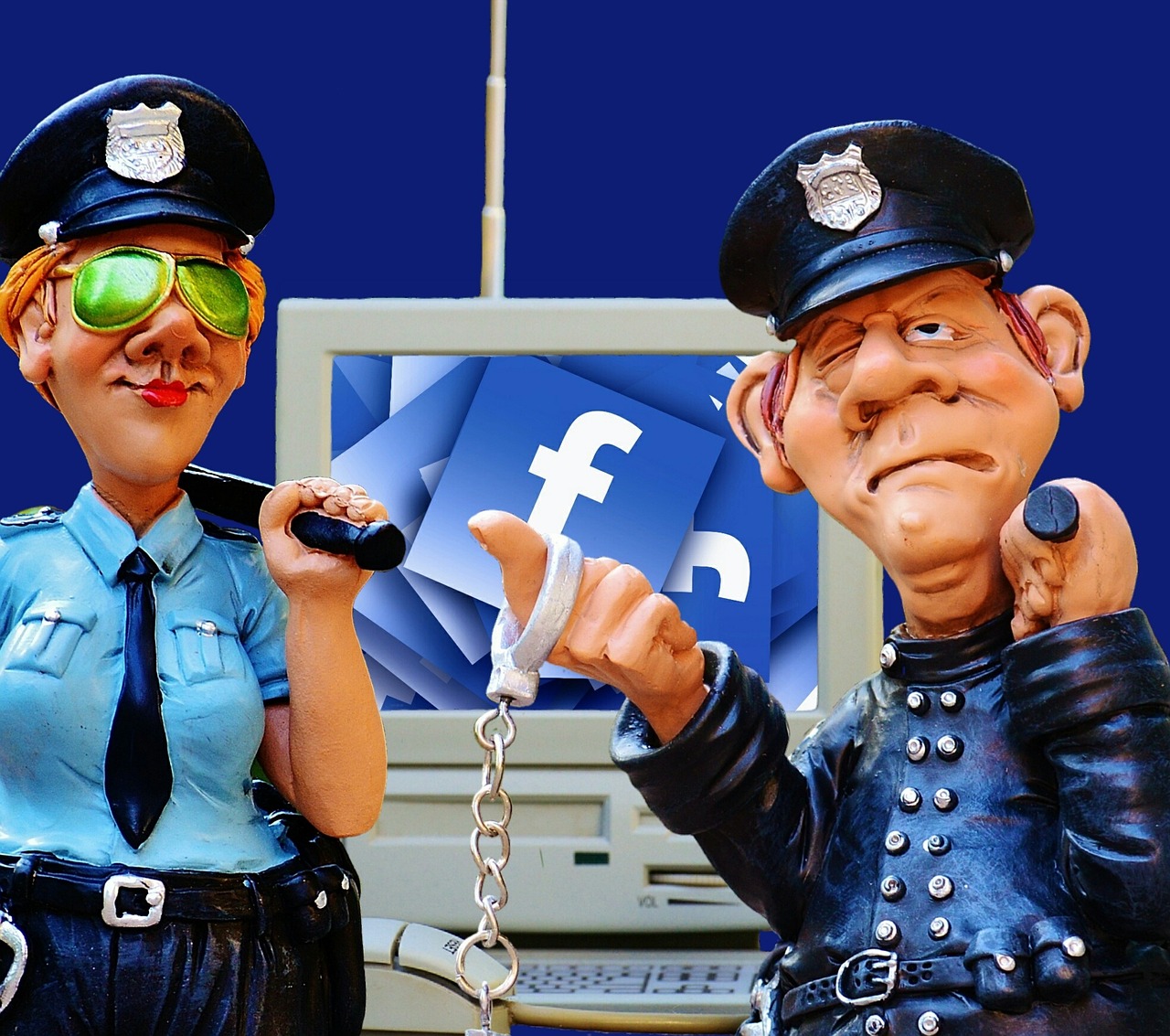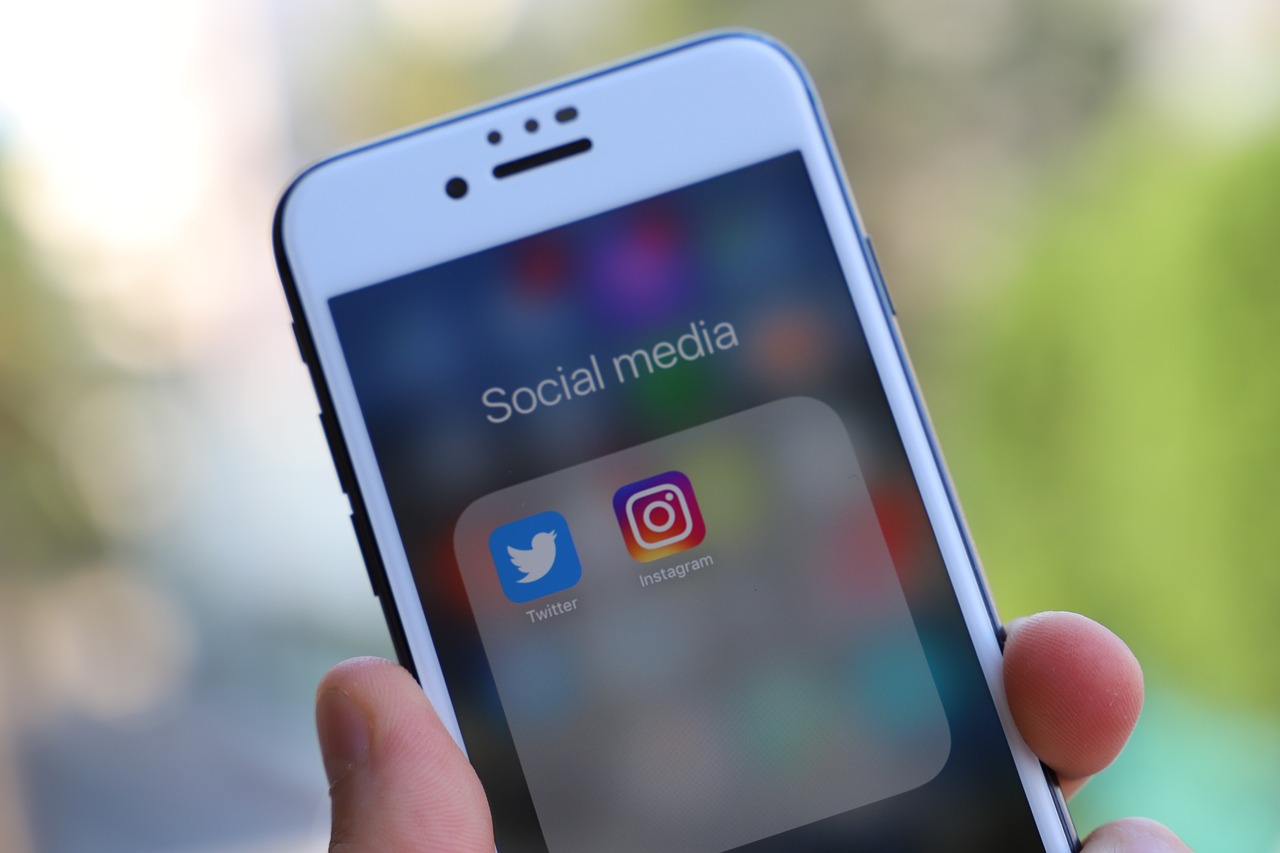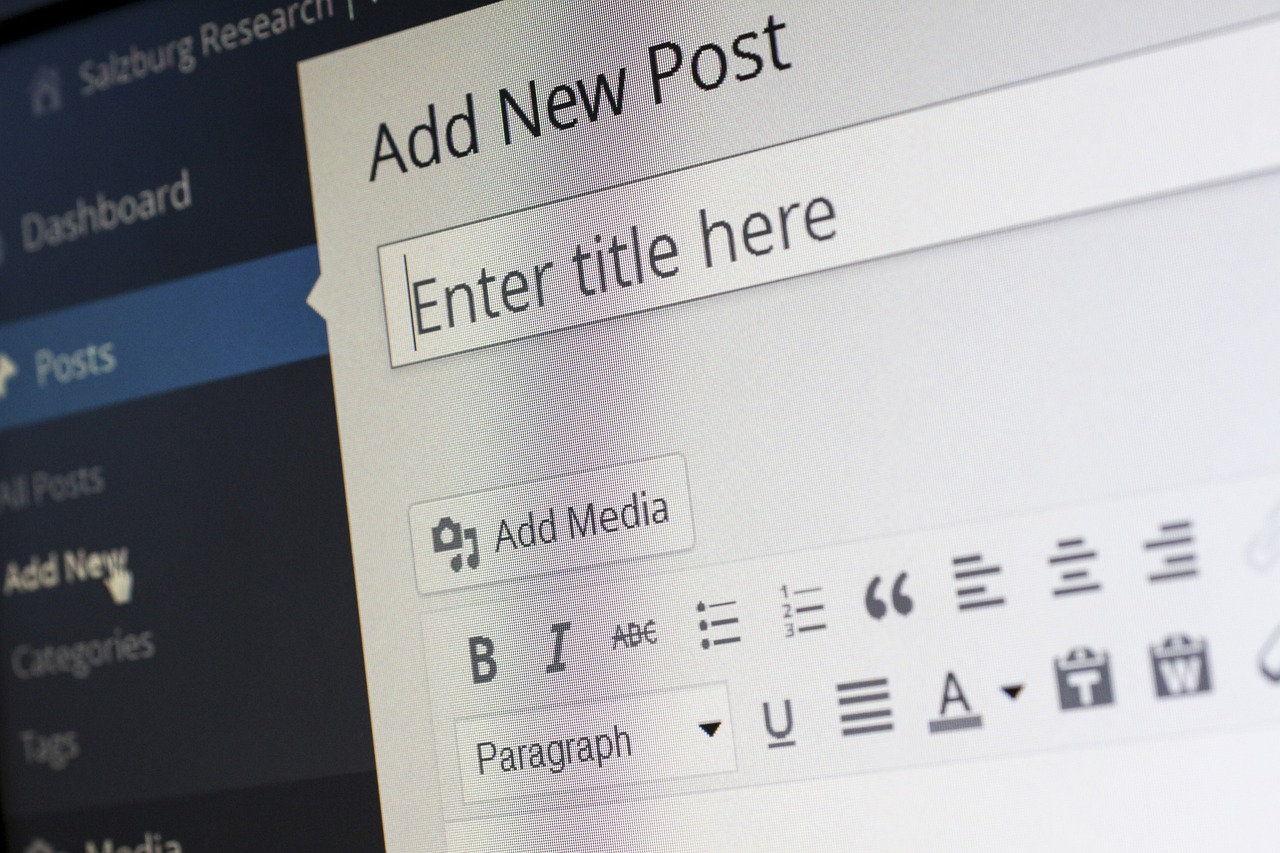How to Secure Your Private Information on Social Media?
In today's digital age, sharing our lives on social media has become second nature. However, with this openness comes the risk of exposing our private information to potential threats. So, how can we navigate this complex landscape and ensure our personal data remains safe? The answer lies in adopting effective strategies that not only protect our information but also empower us to enjoy social media without fear. Let's dive into the essential steps you can take to secure your private information on these platforms.
First things first, understanding your privacy settings is absolutely crucial. Each social media platform has its own set of privacy controls that allow you to manage who sees your content and how your information is shared. For instance, on Facebook, you can adjust settings to limit who can see your posts or even who can send you friend requests. Similarly, Instagram and Twitter offer privacy options that can help you control your visibility. Take a moment to explore these settings; it’s like putting up a fence around your yard—essential for keeping unwanted visitors out.
Now, let’s talk about passwords—the first line of defense in your digital security arsenal. A weak password is akin to leaving your front door wide open. To create strong passwords, consider the following tips: use a mix of uppercase and lowercase letters, numbers, and symbols. Avoid easily guessable information like birthdays or pet names. Instead, think of a phrase or a sentence that you can easily remember but is difficult for others to guess. For example, "MyDogLoves2PlayFetch!" is much stronger than "dog123". Remember, using unique passwords for different accounts is vital—if one gets compromised, the others remain safe.
Managing multiple strong passwords can be daunting, but that's where password managers come in. These handy tools store your passwords securely and can even generate complex ones for you. Think of a password manager as a digital vault—keeping your treasures safe while you go about your online activities. With features like auto-fill and password sharing, they simplify your life and enhance your security.
When selecting a password manager, look for key features such as end-to-end encryption, multi-device compatibility, and a user-friendly interface. Some popular options include LastPass, Dashlane, and 1Password. Always go for a reputable service to ensure your data remains protected. Remember, not all vaults are created equal, so choose wisely!
Another essential layer of security is two-factor authentication (2FA). This feature requires not only your password but also a second piece of information, typically a code sent to your phone or email. It’s like having a bouncer at your club—only those with the right ID get in. Setting up 2FA is straightforward on most platforms; just navigate to your account settings and follow the prompts. Trust me, this extra step can make a world of difference in protecting your accounts.
Phishing scams are unfortunately common on social media. These deceptive tactics often come in the form of messages or posts that appear legitimate but are designed to steal your information. Look out for signs such as poor spelling and grammar, suspicious links, or requests for personal information. If something feels off, trust your instincts—don’t click that link! Being vigilant is your best defense against these scams.
When it comes to friend requests and followers, being cautious is key. Not everyone who sends you a request has good intentions. Take the time to vet your connections—check their profiles, mutual friends, and activity. If something seems fishy, don’t hesitate to ignore or block them. It’s better to be safe than sorry, right? Maintaining a secure network is crucial to keeping your personal information private.
Your choice between a public and private profile greatly impacts your privacy. A public profile allows anyone to see your posts, which can be great for networking but risky for personal security. On the other hand, a private profile restricts visibility to only those you approve, enhancing your privacy. Weigh the pros and cons carefully—what works for one person may not work for you.
Finally, regularly monitoring your online presence is essential. Tools like Google Alerts can notify you when your name appears online, helping you stay aware of what information is publicly accessible. Additionally, conducting periodic audits of your social media accounts can help you identify any security vulnerabilities. Think of it as a routine check-up for your digital health—keeping everything in tip-top shape!
- How can I tell if my account has been hacked? Look for unusual activity, such as unfamiliar login locations or changes to your account settings.
- What should I do if I receive a suspicious message? Do not click any links or provide personal information. Report it to the platform and block the sender.
- Can I change my privacy settings after I've posted something? Yes, most platforms allow you to adjust your privacy settings retroactively.

Understanding Privacy Settings
This article explores effective strategies and tips to safeguard your private information on social media platforms, ensuring your online presence remains secure and your personal data is protected from potential threats.
When it comes to social media, understanding privacy settings is like having a shield that protects your personal information from prying eyes. Each social media platform offers a variety of settings that allow you to control who sees your content and how much of your information is shared. It's essential to regularly review these settings to ensure they align with your privacy preferences. Have you ever wondered how much personal data you’re actually sharing without realizing it? Let’s dive into the specifics!
To access your privacy settings, you typically need to navigate to your account settings or profile section. For instance, on Facebook, you can find this option in the dropdown menu at the top right corner, while on Instagram, it’s located within your profile settings. Once you’re in, take a moment to familiarize yourself with the various options available. Here’s a quick overview of common privacy settings you should consider:
| Platform | Key Privacy Settings |
|---|---|
| Profile visibility, friend requests, post audience, and location sharing. | |
| Account privacy (public vs. private), story settings, and comment controls. | |
| Tweet privacy, direct message settings, and location tagging. |
Adjusting these settings can significantly enhance your security. For example, setting your profile to private on Instagram means that only approved followers can see your posts and stories. Similarly, on Facebook, you can limit who can send you friend requests or even who can see your posts. The more you customize these settings, the better you can protect your personal information from unwanted exposure.
Moreover, don't forget to review your friend lists and followers regularly. It’s not just about who you add but also about who you allow to remain connected with you. If you notice any suspicious accounts or people you don’t know, don’t hesitate to remove them. Remember, your online safety is in your hands.
In addition to adjusting your privacy settings, consider the implications of what you share online. Even with strict privacy settings, sharing sensitive information can lead to unintended consequences. For instance, posting your location in real-time can alert others to your whereabouts, making you vulnerable. Always think twice before sharing personal details, and ask yourself, “Would I want this information to be public?”
Lastly, keep in mind that social media platforms frequently update their privacy policies and settings. To stay informed, make it a habit to check for updates or changes to privacy settings periodically. This proactive approach will help you maintain control over your personal information and adapt to any new features or security measures that may be introduced.
- Why are privacy settings important on social media?
Privacy settings help control who can see your information and posts, reducing the risk of data breaches and unwanted attention. - How often should I review my privacy settings?
It’s a good idea to review your privacy settings at least once every few months or whenever a platform updates its features. - Can I make my social media accounts completely private?
Most social media platforms allow you to set your account to private, but some information may still be visible to the platform itself.

Creating Strong Passwords
When it comes to securing your online accounts, strong passwords are your first line of defense. Think of your password as the key to your digital house; if it's weak, you're inviting unwanted guests in. So, how do you create a password that’s not just easy for you to remember but also tough for hackers to crack? Here are some best practices to consider.
First off, your password should be at least 12 characters long. The longer the password, the harder it is for someone to brute-force it. But don’t just go for length—mix it up! Use a combination of upper and lower case letters, numbers, and special characters. For instance, instead of using a simple word like "password," you might create something like "P@ssw0rd!2023". This not only makes it more complex but also harder to guess.
Another essential tip is to avoid using easily accessible information. Things like your birthday, pet’s name, or even your favorite sports team can be easily discovered through social media stalking. Instead, think outside the box! Create a password based on a phrase or a sentence that means something to you. For example, “I love to travel to Paris in 2023!” could become “ILuv2Tr@vel2P@ris!23” when shortened and altered.
It’s also crucial to use unique passwords for each of your accounts. If one password gets compromised, you don’t want it to lead to a domino effect where all your other accounts are at risk. To help manage this, consider utilizing a password manager. These tools can generate complex passwords for you and store them securely, so you don’t have to remember every single one. Sounds convenient, right?
To summarize, here are the key elements of creating strong passwords:
- At least 12 characters long
- A mix of upper and lower case letters
- Inclusion of numbers and special characters
- Avoiding personal information
- Using unique passwords for different accounts
By following these guidelines, you can significantly enhance your online security. Remember, a strong password is like a strong fortress—it's designed to keep the bad guys out while allowing you to enjoy your digital world without fear. So, take a moment today to evaluate your passwords and make the necessary changes!

Utilizing Password Managers
In today's digital age, where we juggle countless online accounts, utilizing a password manager is not just a luxury but a necessity. Imagine trying to remember a unique password for every single account you own—it's like trying to remember the names of all the stars in the sky! Password managers come to the rescue by securely storing your passwords in one place, making it easier to manage your online security without the mental gymnastics.
One of the primary benefits of using a password manager is the convenience it offers. Instead of struggling to recall complex passwords, you only need to remember one master password. This single password unlocks your vault of credentials, allowing you to access all your accounts with ease. Furthermore, many password managers generate strong, random passwords for you, ensuring that your accounts are protected by passwords that are nearly impossible to crack.
Another significant advantage is the security features that come with most password managers. They often include encryption, which means your stored passwords are scrambled and can only be accessed with your master password. This adds a layer of protection, making it much harder for hackers to gain access to your sensitive information. Additionally, many password managers offer features like breach alerts, notifying you if any of your accounts have been compromised in a data breach. This proactive approach enables you to change your passwords promptly, reducing the risk of identity theft.
However, not all password managers are created equal. When choosing the right one for your needs, consider the following key features:
- Cross-Platform Compatibility: Ensure that the password manager works on all devices you use, whether it's a smartphone, tablet, or computer.
- User-Friendly Interface: Look for a password manager that is easy to navigate, so you won't waste time figuring out how to use it.
- Two-Factor Authentication: Opt for a password manager that offers two-factor authentication for an added layer of security.
- Secure Sharing Options: If you need to share passwords with family or colleagues, choose a password manager that allows secure sharing without compromising your security.
In conclusion, utilizing a password manager is a smart move for anyone serious about protecting their online presence. By simplifying password management and enhancing security, these tools can help you focus on what really matters—enjoying your online experiences without the constant worry of password-related issues. So why not take the leap and invest in a password manager? Your future self will thank you!

Choosing the Right Password Manager
When it comes to safeguarding your online accounts, choosing the right password manager can feel like finding a needle in a haystack. With so many options available, how do you know which one is the best fit for your needs? First and foremost, it's essential to look for a password manager that offers robust security features. This means end-to-end encryption, two-factor authentication, and a zero-knowledge policy, which ensures that even the service provider cannot access your passwords.
Next, consider the user interface. A password manager should be intuitive and easy to navigate. If it feels complicated or overwhelming, you might find yourself avoiding it altogether, which defeats the purpose of using one in the first place. Look for managers that offer browser extensions and mobile apps, allowing you to access your passwords seamlessly across devices.
Another critical factor is cross-platform compatibility. You want a password manager that works well on all your devices, whether you're using Windows, macOS, Android, or iOS. This way, you can manage your passwords effortlessly, regardless of the device you’re on. Additionally, check if the password manager supports password sharing features. This can be particularly useful if you need to share access to specific accounts with family members or colleagues without revealing your actual passwords.
To help you in your decision-making process, here's a quick comparison of popular password managers based on essential features:
| Password Manager | Security Features | Cross-Platform Support | Password Sharing |
|---|---|---|---|
| LastPass | End-to-end encryption, two-factor authentication | Yes | Yes |
| 1Password | End-to-end encryption, travel mode | Yes | Yes |
| Dashlane | Dark web monitoring, VPN | Yes | Yes |
| Bitwarden | Open-source, end-to-end encryption | Yes | Yes |
Finally, consider the cost. Some password managers offer free versions with limited features, while others require a subscription for full access. Evaluate your needs and budget, and remember that investing in a good password manager is a small price to pay for the peace of mind that comes with knowing your sensitive information is secure.

Setting Up Two-Factor Authentication
In today's digital age, where cyber threats lurk around every corner, setting up two-factor authentication (2FA) is like adding a sturdy lock on your front door. It's an extra layer of security that ensures even if someone gets their hands on your password, they won't be able to access your account without a second form of verification. So, how do you go about implementing this essential security measure? Let's break it down!
First off, most major social media platforms offer 2FA, and the process is typically straightforward. To get started, navigate to the security settings of your account. You'll usually find it under 'Settings' or 'Privacy.' Once there, look for an option labeled something like 'Two-Factor Authentication' or 'Login Verification.' After selecting this option, you will be prompted to choose your preferred method of receiving the second factor of authentication.
Common methods include:
- SMS Text Message: You'll receive a code via text message each time you log in.
- Authentication Apps: Apps like Google Authenticator or Authy generate time-sensitive codes that you enter when logging in.
- Email Verification: A code is sent to your registered email address.
While all these methods provide additional security, using an authentication app is often considered the most secure option because it doesn’t rely on your phone number, which can be compromised. Once you've chosen your method, follow the on-screen instructions to complete the setup process. This usually involves entering a code sent to you via your chosen method to verify that it works correctly.
After you've successfully set up 2FA, take a moment to store backup codes securely. These are typically provided during the setup process and can be used if you lose access to your primary 2FA method. Think of them as a spare key to your house—always good to have just in case!
Lastly, don't forget to regularly check your 2FA settings and update them if necessary. If you change your phone number or switch devices, make sure to update your authentication method to avoid being locked out of your account. Setting up 2FA might feel like a hassle at first, but it’s a small price to pay for the peace of mind that comes with knowing your personal information is better protected.

Recognizing Phishing Scams
In today's digital world, phishing scams have become a common threat, especially on social media platforms. These scams often masquerade as legitimate messages or notifications, aiming to trick you into revealing your personal information, such as passwords or financial details. So, how can you protect yourself from these deceitful tactics? The first step is to stay informed about the typical signs of phishing attempts.
One of the most prevalent forms of phishing is the use of urgent language. Scammers often create a sense of urgency, claiming your account will be suspended or that you need to verify your information immediately. For example, you might receive a message that says, "Your account will be locked unless you verify your details within 24 hours!" This tactic is designed to provoke a quick response without allowing you to think critically about the situation.
Another red flag to watch for is unusual sender addresses. Phishing emails or messages often come from addresses that look similar to legitimate sources but have slight variations. For instance, instead of "support@facebook.com," you might see "support@faceb00k.com." Always double-check the sender's email address and be cautious of any discrepancies.
Additionally, be wary of generic greetings in messages. Legitimate companies typically address you by your name. If you receive a message that starts with "Dear Customer" or "Hello User," it’s a clear indication that it might be a phishing attempt. Scammers often cast a wide net, hoping to catch as many unsuspecting victims as possible.
When you receive a suspicious message, it’s crucial to avoid clicking on any links or downloading attachments. Instead of engaging with the content, consider visiting the official website of the company in question directly. You can also report the phishing attempt to the platform or service being impersonated. This not only helps protect yourself but also aids in safeguarding others from falling victim.
To summarize, here are some key signs of phishing scams to keep in mind:
- Urgent requests for action
- Unusual sender addresses
- Generic greetings
- Suspicious links or attachments
By staying vigilant and recognizing these signs, you can significantly reduce your risk of falling prey to phishing scams on social media. Remember, it’s always better to be cautious and verify than to act impulsively and regret it later!
What should I do if I think I fell for a phishing scam?
If you suspect that you have fallen victim to a phishing scam, immediately change your passwords and enable two-factor authentication on your accounts. Additionally, monitor your accounts for any unauthorized transactions and report the incident to the platform involved.
Can I report phishing attempts?
Yes! Most social media platforms have mechanisms in place for reporting phishing attempts. Look for options in the help or support sections of the platform to report suspicious messages or accounts.
Are phishing scams only found in emails?
No, phishing scams can occur on various platforms, including social media, text messages, and even phone calls. Always remain cautious, regardless of the medium.

Managing Friend Requests and Followers
In the vast world of social media, where connections are just a click away, managing friend requests and followers is more crucial than ever. Have you ever thought about the people who are following you? It’s easy to get caught up in the excitement of gaining new followers or accepting friend requests, but this can sometimes lead to unwanted exposure of your private information. So, how can you navigate this digital landscape safely?
First and foremost, always vet your connections. When someone sends you a friend request, take a moment to review their profile. Are they a real person or just a faceless account? Look for signs of authenticity: do they have mutual friends, a complete profile, and regular activity? If their profile seems sparse or suspicious, it’s best to hit that ignore button. Remember, not every request needs to be accepted; your online safety should always be your top priority.
Next, consider the implications of accepting followers. Many platforms allow you to have a public profile, which means anyone can see your posts and personal information. While this can be great for networking, it can also expose you to unwanted attention. On the other hand, switching to a private profile means you have more control over who sees your content. It's like having a cozy backyard barbecue where only your friends are invited, rather than an open invitation to the entire neighborhood.
Moreover, regularly reviewing your friend list is a good practice. It’s not just about who you accept; it's also about who you choose to keep. If you have connections that you no longer interact with or don’t recognize, it might be time to remove them. This not only tightens your security but also declutters your social media experience. You can think of your friend list as a garden; it needs regular pruning to thrive!
To help you manage your connections effectively, here’s a quick table summarizing the key considerations:
| Consideration | Action |
|---|---|
| Profile Review | Check for mutual friends and activity |
| Public vs. Private | Decide based on your comfort level |
| Regular Audits | Remove inactive or suspicious accounts |
Lastly, don’t forget to adjust your privacy settings regarding who can send you friend requests. Most social media platforms allow you to limit this to friends of friends or even disable requests entirely. This adds another layer of protection, ensuring that only people you have some connection with can reach out to you.
In conclusion, managing friend requests and followers is not just about building a network; it's about creating a safe space for your personal information. By being proactive and vigilant, you can enjoy the benefits of social media while minimizing the risks. So, the next time you receive a friend request, take a moment to think—are they really someone you want in your digital life?
- How can I tell if a friend request is fake? Look for incomplete profiles, lack of mutual friends, or suspicious activity.
- Should I accept all friend requests? No, only accept requests from people you know or trust.
- What are the benefits of a private profile? It limits who can see your posts and personal information, enhancing your privacy.

Understanding Public vs. Private Profiles
When it comes to managing your social media presence, one of the most significant decisions you'll make is whether to set your profile to public or private. This choice can drastically affect your online privacy and security. Think of your social media profile as your front yard. A public profile is like leaving your gate wide open, inviting anyone to stroll in, while a private profile is akin to having a well-locked door, allowing only trusted friends and family to enter.
With a public profile, your posts, photos, and information are visible to anyone on the internet. This can be beneficial for those looking to build a brand or connect with a wider audience. However, it also means that your personal data is exposed to potential threats, including stalkers, identity thieves, and unwanted attention. On the other hand, a private profile restricts who can view your content, offering a layer of protection. But, it might limit your ability to connect with new people or audiences.
Here are some key points to consider when deciding between public and private profiles:
- Audience Reach: A public profile can help you reach a larger audience, which is essential for influencers or businesses. If you're looking to maximize your visibility, this may be the way to go.
- Privacy Control: A private profile allows you to control who sees your content. You can approve or deny friend requests, ensuring that only people you know can interact with your posts.
- Content Sharing: Consider how you want to share your content. If you prefer to keep your thoughts and photos to a close circle, a private profile is more suitable.
- Potential Risks: Public profiles may attract unwanted attention, while private profiles can create a sense of security. Assess your risk tolerance before making a decision.
Ultimately, the choice between a public and private profile hinges on your personal goals and comfort level with sharing information. If you decide to go public, make sure to regularly review your privacy settings and be mindful of what you post. If you opt for a private profile, remember that even with restrictions, nothing is entirely foolproof. Always be cautious about the information you share, as even trusted friends can unintentionally leak your details.
In conclusion, understanding the implications of public versus private profiles is crucial in today's digital age. Take the time to evaluate your needs and preferences, and choose the setting that best aligns with your desire for privacy and connection.
- Can I change my profile from public to private later?
Yes, most social media platforms allow you to change your privacy settings at any time. - What should I do if someone I don't know sends me a friend request?
It's best to review their profile and mutual connections. If you're unsure, it's okay to ignore or deny the request. - How can I ensure my private profile remains secure?
Regularly review your friend list, be cautious about what you share, and keep your privacy settings updated.

Monitoring Your Online Presence
In today's digital age, keeping an eye on your online presence is not just a good idea—it's essential! With the vast amount of information shared on social media, it’s easy for your personal data to slip through the cracks. Imagine your online presence as a garden; if you don’t tend to it regularly, weeds (or unwanted attention) can quickly take over. So, how do you ensure that your garden remains beautiful and secure? Let’s explore some effective strategies to monitor your digital footprint and protect your private information.
First off, you need to be aware of what information is out there about you. This includes not just your social media profiles but also any posts, comments, or photos that may have been shared by others. A simple Google search of your name can reveal a lot. You might be surprised by what pops up! Regularly searching for yourself can help you identify any unwanted or outdated information that may need to be addressed.
Another effective way to monitor your online presence is by using specialized tools. There are several services available that can alert you whenever your name or personal information appears online. For instance, tools like Google Alerts can notify you whenever your name is mentioned in new content across the web. This proactive approach allows you to respond swiftly to any potential privacy breaches.
Moreover, social media platforms often provide features that allow you to see who has interacted with your posts or who has viewed your profile. By regularly checking these features, you can gain insights into your audience and identify any suspicious activity. If you notice unfamiliar accounts engaging with your content, it may be time to tighten your privacy settings or remove them from your followers.
Here’s a quick overview of some tools and strategies you can use to monitor your online presence:
- Google Alerts: Set up alerts for your name, email, or any other personal information to stay informed about your online mentions.
- Social Media Insights: Utilize the analytics tools provided by platforms like Facebook and Instagram to track engagement and audience demographics.
- Privacy Checkups: Regularly perform privacy checkups on your social media accounts to ensure your settings are up-to-date.
Lastly, don't underestimate the power of community. Engaging with friends and family about their online experiences can provide valuable insights into maintaining a secure digital presence. They might share tips or tools that have worked for them, creating a collaborative effort in safeguarding everyone’s information.
Monitoring your online presence is an ongoing process, much like maintaining a healthy lifestyle. It requires consistent effort, awareness, and a willingness to adapt to new challenges. By staying vigilant and proactive, you can ensure that your personal information remains secure and that you control your digital narrative.
Q: How often should I monitor my online presence?
A: It's a good practice to monitor your online presence at least once a month. However, if you're active on social media or have shared sensitive information, consider checking more frequently.
Q: What should I do if I find negative information about myself online?
A: If you discover negative information, consider reaching out to the source to request removal. You can also consult a reputation management service for additional support.
Q: Are there free tools to help me monitor my online presence?
A: Yes, there are several free tools available, such as Google Alerts, which can notify you about mentions of your name or information across the web.
Frequently Asked Questions
- What are privacy settings and why are they important?
Privacy settings are tools provided by social media platforms that allow you to control who can see your information and how it's shared. They're crucial for protecting your personal data from unwanted eyes. By adjusting these settings, you can limit access to your profile, posts, and other sensitive information, ensuring that only trusted friends and followers can view your content.
- How can I create a strong password?
Creating a strong password involves using a mix of uppercase and lowercase letters, numbers, and special characters. Aim for at least 12 characters and avoid using easily guessed information like birthdays or names. A strong password acts as your first line of defense against unauthorized access, so take it seriously!
- What is a password manager and how does it help?
A password manager is a tool that securely stores and manages your passwords. It can generate strong, unique passwords for each of your accounts, reducing the risk of using weak or repeated passwords. With a password manager, you only need to remember one master password, making it easier to maintain your online security.
- Why should I enable two-factor authentication?
Two-factor authentication (2FA) adds an extra layer of security by requiring not only your password but also a second form of verification, like a text message code or an authentication app. This means that even if someone gets hold of your password, they won't be able to access your account without that second factor, significantly enhancing your account's security.
- What are common signs of phishing scams on social media?
Common signs of phishing scams include suspicious messages that ask for personal information, links to unfamiliar websites, and urgent requests for action. Always be cautious with messages from unknown sources, and double-check URLs before clicking on them. If it seems too good to be true, it probably is!
- How should I manage friend requests and followers?
Be selective about accepting friend requests and followers. Only connect with people you know or trust. Take the time to review profiles and look for mutual friends or common interests. This helps you maintain a secure network and reduces the risk of unwanted access to your personal information.
- What are the pros and cons of public vs. private profiles?
Public profiles allow anyone to see your content, which can be great for networking but risky for privacy. Private profiles restrict access to only approved followers, enhancing security but limiting your audience. Consider your goals and comfort level with sharing information when deciding which option to choose.
- How can I monitor my online presence?
Regularly search for your name on search engines and social media platforms to see what information is publicly available. You can also use tools like Google Alerts to get notified when your name appears online. Monitoring your digital footprint helps you catch potential privacy issues early and take necessary actions to protect your information.



















